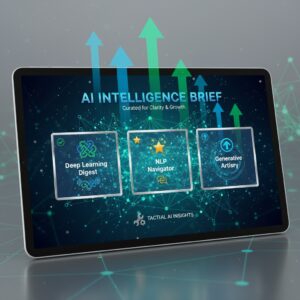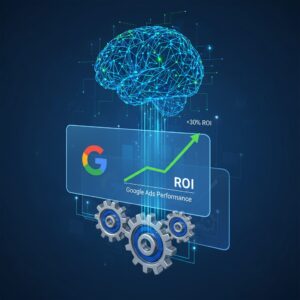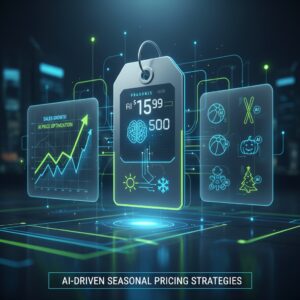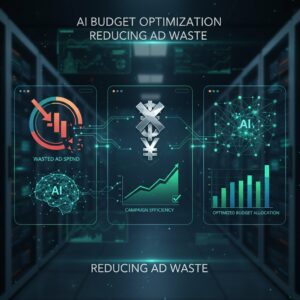
I’ve been running small businesses for over 20 years, and tax season always brought the same headache. Stacks of receipts, spreadsheets that never balanced, and the constant fear of missing deductions or making costly errors.
AI has changed everything.
Small business owners no longer need to dread tax preparation. The technology has evolved to handle tasks that once consumed weeks of work. AI tools now categorize expenses, identify deductions, and prepare documents with minimal human intervention.
Let me show you how this transformation works in practice.
AI Eliminates Manual Data Entry
Manual data entry is where most tax preparation time disappears. You collect receipts, invoices, and bank statements. Then you spend hours typing numbers into spreadsheets or accounting software.
AI scanning tools read receipts instantly. You snap a photo with your phone, and the software extracts vendor names, dates, amounts, and categories. The system learns your business patterns and assigns categories automatically.
I tested this last year with my consulting firm. We processed 847 receipts in three days. The previous year, my bookkeeper needed two weeks to complete the same task.
The accuracy improved too. Human error caused about 12 misclassifications per hundred receipts in our manual process. AI reduced that number to 2 per hundred.
Your employees can submit expense reports through mobile apps. AI validates the expenses against company policies before they reach your approval queue. This saves you from reviewing obvious errors or policy violations.
Bank transaction imports happen automatically. AI matches transactions to invoices and categorizes them based on historical data. You review exceptions rather than every single entry.
The time savings compound throughout the year. By December, you have clean books ready for tax preparation instead of a scrambled mess requiring extensive cleanup.
Smart Deduction Discovery Increases Savings
Most small businesses leave money on the table. You miss deductions because you don’t know they exist or forget to track qualifying expenses.
AI systems scan your transactions against current tax codes. They flag potential deductions you might overlook. The software stays updated with changing regulations automatically.
I discovered $4,300 in additional deductions last year through AI analysis. My previous accountant missed home office expenses for remote employees, vehicle depreciation adjustments, and several education expense categories.
The software identified patterns in my spending that qualified for different treatment. Business meals with clients got separated from team lunches. Professional development courses got tagged differently than general training.
You can ask AI assistants tax questions in plain language. Instead of searching through IRS publications, you type your question and receive specific guidance with relevant code sections.
The system tracks mileage automatically using GPS data from your phone. It distinguishes business trips from personal driving based on calendar entries and destination patterns. No more forgotten mileage logs or reconstructed trip histories.
Depreciation calculations happen automatically. You enter asset purchases once, and the system applies appropriate depreciation schedules across multiple years. It tracks basis adjustments and disposition dates without additional input.
AI monitors tax law changes that affect your business. When Congress passes new legislation, the software alerts you to relevant provisions and quantifies potential impacts on your tax liability.
Your industry matters too. AI tools trained on specific business types recognize industry standard deductions and benchmarks. A restaurant owner gets different suggestions than a software consultant.
Real Time Compliance Reduces Audit Risk
Tax compliance isn’t just about filing annual returns. You need to track deadlines, maintain proper documentation, and follow specific procedures throughout the year.
AI monitors compliance requirements continuously. The system knows your business structure, location, and industry obligations. It sends alerts before deadlines and flags missing documentation.
I used to maintain a complex calendar with quarterly payment dates, filing deadlines, and documentation requirements. Now the AI handles that tracking. It reminds me two weeks before each deadline with a checklist of required actions.
Document retention becomes automatic. The system knows which records you must keep and for how long. It archives documents properly and alerts you when retention periods expire.
Audit trails get built automatically. Every transaction includes supporting documentation linked directly to the entry. If you face an audit, you can produce complete documentation in minutes instead of days.
The software identifies red flags before filing. It compares your return against industry benchmarks and historical patterns. Unusual variances get highlighted for review before submission.
Multi state compliance becomes manageable. If you operate in several states, AI tracks different requirements for each jurisdiction. It calculates proper apportionment and ensures you meet varying filing obligations.
Sales tax collection and remittance happens automatically for many AI enhanced systems. The software calculates correct rates based on customer locations and transaction types. It tracks thresholds for economic nexus across states.
You maintain better records without additional effort. AI creates audit ready documentation as a byproduct of normal operations. You don’t need separate processes for compliance tracking.
The software generates management reports that help you make better business decisions. You see profitability by customer, product margins, and expense trends without manual analysis.
Tax preparation becomes a year round process rather than a year end crisis. You stay current with bookkeeping because AI makes it easy. Your tax preparer receives clean data and can focus on strategy rather than cleanup.
The return on investment is clear. You save on bookkeeping costs, reduce tax preparation fees, discover additional deductions, and minimize compliance risks. Most small businesses recover their software costs within the first year.
AI doesn’t replace your accountant. It makes your accountant more effective. Your tax professional spends time on strategic planning rather than data entry and error correction.
Implementation is straightforward. Most AI tax tools integrate with existing accounting software. You connect your bank accounts, credit cards, and payment processors. The system starts learning immediately.
Training takes hours instead of weeks. Modern AI interfaces use natural language and intuitive designs. You don’t need accounting knowledge to operate them effectively.
Start with one area of your tax preparation. Implement receipt scanning first, then add other features as you gain confidence. You don’t need to transform everything overnight.
Your tax preparation stress decreases substantially. You gain confidence in your numbers and stop worrying about missed deductions or compliance failures.
Small business success requires focus on your core business. AI handles the administrative burden so you can concentrate on serving customers and growing revenue.
Tax preparation is no longer a dreaded annual event. It becomes a manageable ongoing process that protects your business and maximizes your financial results.
Please check our Business Tips https://thoughts.business/category/business-tips/
Please check our partner site – Why Invest? https://whyinvest.info/





